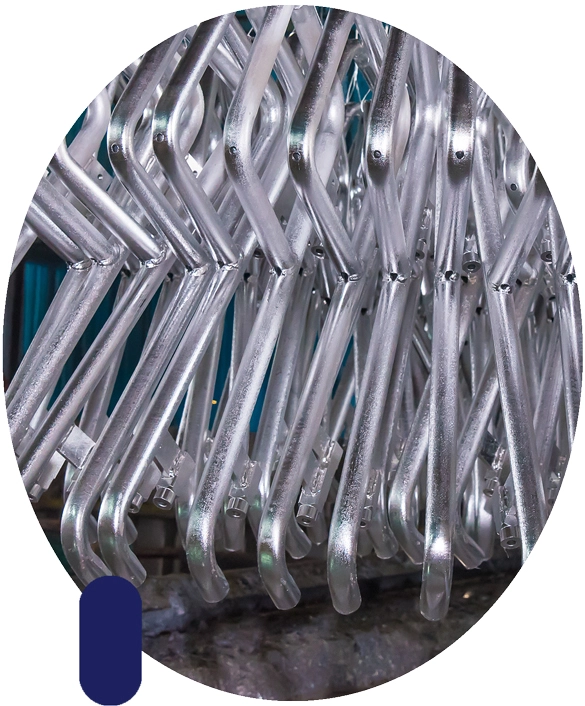Surface treatments
Acura Group is a specialist in the design and construction of process line installations for the processing of metallic surfaces. We offer turnkey solutions with tanks and technical plastics of different types (steel, Kynar, CPVC, PLP and PVC).
Essential service for industries in general and manufacturing, transformation, or assembly companies of machines and products.
Create your project with us!

What are surface treatments?
Metal surface treatments are processes to modify a surface to increase or decrease some of its qualities (insulation, hardness, resistance), according to the industrial process for which it is required.
The most common techniques we use in the industry for the treatment of metal surfaces are: anodizing, phosphatizing, electroplating, electrodeposition, electropolishing, degreasing, and pickling.
The following are the basic processes of most of the treatments:
- Surface heat treatments: in these, the depth of the base material can be controlled. They involve a structural transformation and can be done manually, automatically or semi-automatically, even continuously or discontinuously.
- Chemical conversion: those processes that use chemical reactions to add metal coatings and thus give a new layer to the surface. Some treatments are called thermochemical because they combine the previous process with this one.
- Electrochemical conversion: the difference with the previous process is that in this one, electric currents are used to ensure the adhesion of the metal ions.
- Diffusion treatments: These include techniques that are becoming increasingly popular due to their low cost. They modify metal surfaces to reduce oxidation, corrosion, and wear. Examples include carburizing and deposition.
- Material removal: here are classified those treatments that, instead of adding, remove excess material from surfaces. Generally, they are used to rectify the assembly of parts.
In these, the depth of the base material can be controlled. They involve a structural transformation and can be done manually, automatically or semi-automatically, even continuously or discontinuously.
Those processes that use chemical reactions to add metal coatings and thus give a new layer to the surface. Some treatments are called thermochemical because they combine the previous process with this one.
The difference with the previous process is that in this one, electric currents are used to ensure the adhesion of the metal ions.
These include techniques that are becoming increasingly popular due to their low cost. They modify metal surfaces to reduce oxidation, corrosion, and wear. Examples include carburizing and deposition.
Here are classified those treatments that, instead of adding, remove excess material from surfaces. Generally, they are used to rectify the assembly of parts.

Benefits
✔ Strengthening Mechanical Resistance
✔ Gain ornamental characteristics
✔ To provide electric isolation
✔ To increase their resistance to abrasion or scratching
✔ To improve the surface oil retention
✔ To increase or decrease friction according to the functionality of the product.

Artículos relacionados
¿Qué es el ahorro energético? Conoce las mejores prácticas para el sector industrial
Acabado y Pulido espejo: Diferencia entre Ra vs Grit en la industria
Mejorando la Eficiencia en la Mezcla Industrial: Agitadores para Tanques Industriales
¿Qué es el ahorro energético? Conoce las mejores prácticas para el sector industrial
Contact us!
We custom designed and installed your operating lines to treat the surfaces of your materials.
We can make a free on-site visit, and if the project requires it, we can manufacture on-site, no matter the location.
Quote now!
[gravityform id="3" title="false"]










